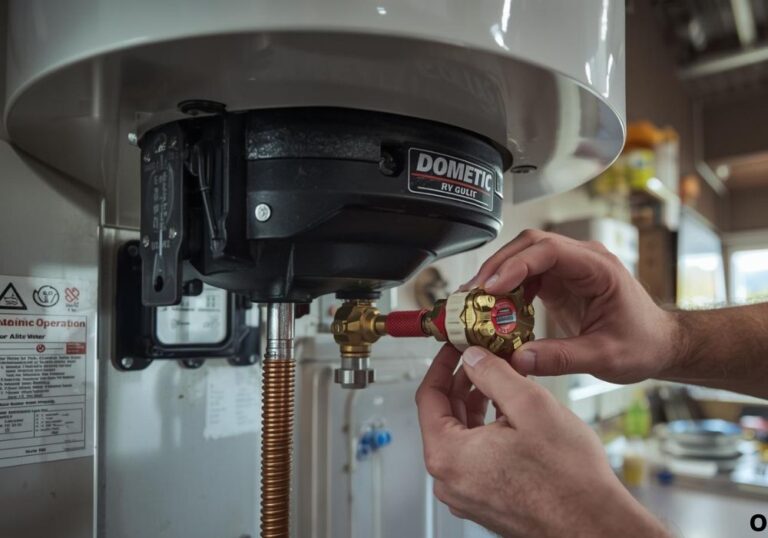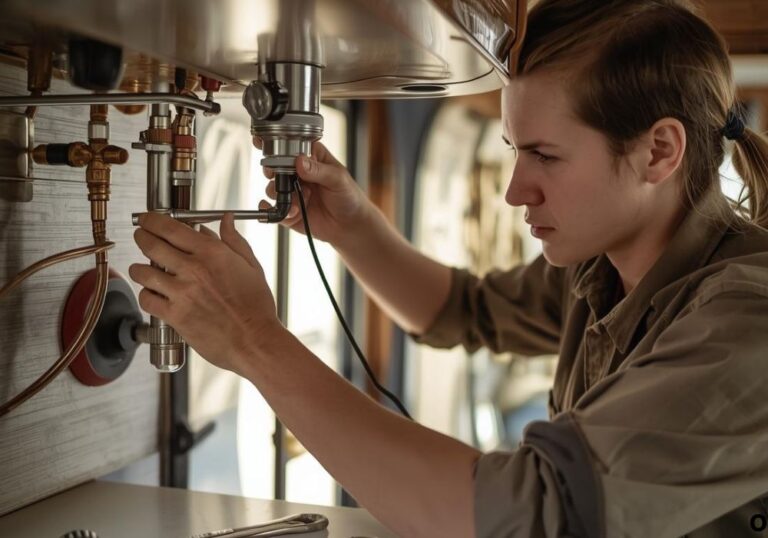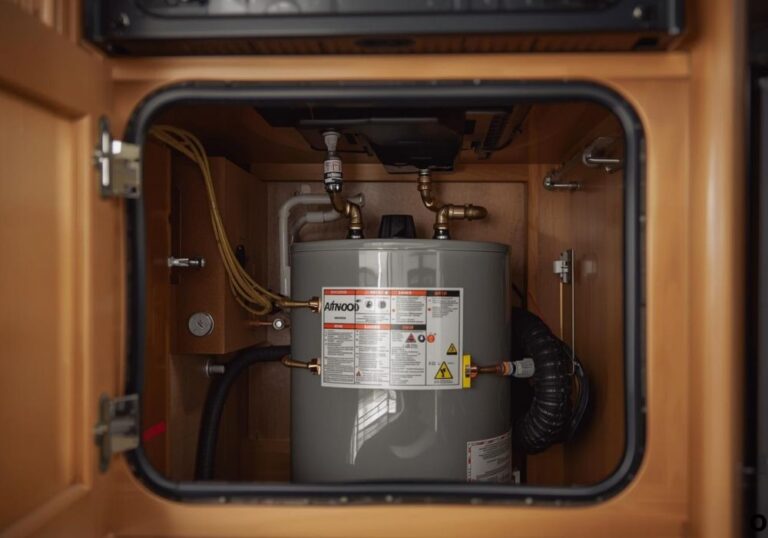DIY Guide: Test RV Hot Water Heater Igniter Safely and Easily
You step into your RV after a long day on the road and try to turn on the water heater, only to find the pilot won’t ignite. Clicking sounds occur, but the flame never appears, leaving you without hot water and frustrated.
The igniter in your RV water heater is a small yet critical component that ensures the pilot flame lights safely and reliably. Without a functioning igniter, the water heater cannot operate, and repeated failed ignition attempts can stress other components or cause gas wastage.
Ignoring issues with the igniter can lead to costly repairs, wasted energy, or even safety hazards. A malfunctioning igniter may also mask other problems like gas leaks or faulty wiring.
Fortunately, testing the igniter is a manageable DIY task when approached safely and methodically. With proper tools and step-by-step instructions, you can determine whether the igniter is functioning or needs replacement.
This guide will cover identifying signs of a faulty igniter, gathering tools, safely testing the igniter, interpreting results, and implementing preventive strategies to maintain reliable operation. Proper testing ensures your RV water heater works efficiently and safely for every trip.
By following these instructions, your RV water heater will remain operational, preventing inconvenient downtime and maintaining comfort on the road. Timely testing and proactive care extend the life of the system and enhance safety.
Signs Your RV Hot Water Heater Igniter May Be Faulty
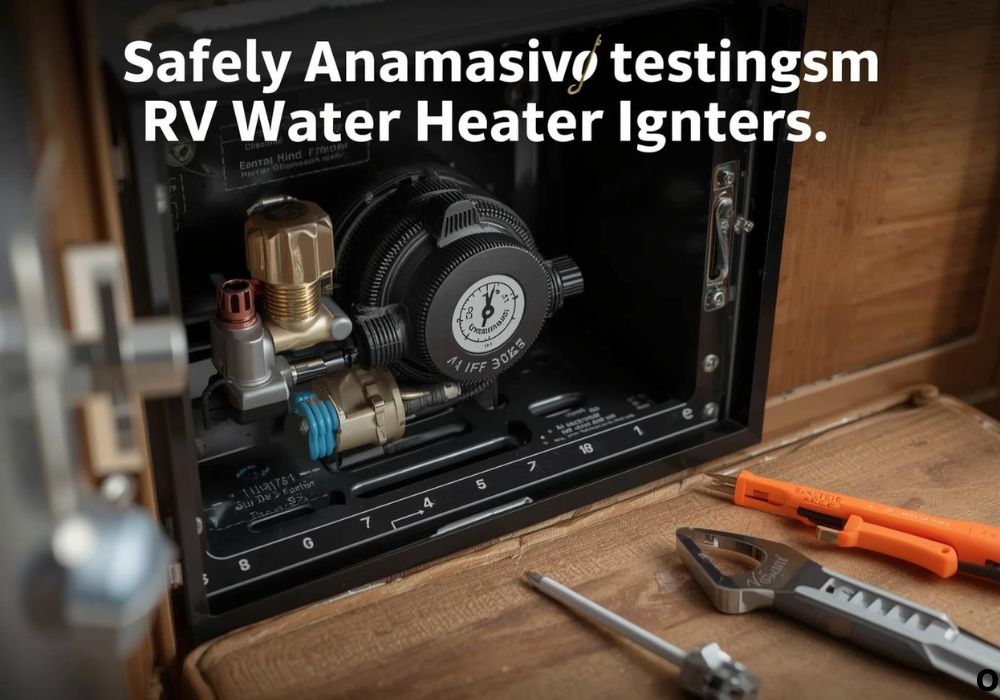
The most obvious sign is a pilot that fails to ignite despite repeated attempts. Clicking sounds may occur without the flame ever appearing.
Inconsistent or no hot water is another indicator. The heater may take unusually long to heat water or never reach the set temperature.
Visible corrosion or a burnt appearance on the igniter tip suggests wear or damage. Mineral deposits, rust, or heat stress can impair functionality.
Intermittent operation or delayed ignition is a common symptom. Sometimes the pilot lights, but other times it fails without explanation.
Breaker trips or blown fuses may also point to electrical issues in the igniter circuit. Repeated electrical faults indicate the component or wiring needs inspection.
A burning or unusual smell near the water heater during operation can indicate overheating due to a failing igniter. Ignoring this warning may result in more serious issues.
Frequent need to reset or relight the pilot indicates the igniter is not reliably detecting or sparking. Early replacement prevents further water heater problems and saves time.
Tools and Materials Needed
A multimeter or continuity tester is essential for checking electrical functionality. This device measures continuity and voltage to confirm the igniter’s condition.
You’ll also need screwdrivers, pliers, and an adjustable wrench to access the igniter and remove panels safely.
Safety gear, including gloves and goggles, protects against burns, sparks, or debris during testing.
Cleaning cloths help remove debris or mineral deposits around the igniter and pilot assembly.
Optional items include a replacement igniter if testing reveals a failure. Having the part ready allows immediate repair without delay.
Workspace preparation is crucial. Turn off all power, disconnect gas, and ventilate the area to ensure safe testing conditions.
High-quality tools and replacement parts ensure accurate testing and long-term reliability. Organization of tools and materials also improves efficiency and safety.
Step-by-Step Process to Test the Igniter
Step 1: Disconnect the RV from shore power or turn off the breaker. Safety first—never work on live electrical circuits.
Step 2: Turn off the gas supply and ensure the water heater is cool before proceeding.
Step 3: Remove the access panel to expose the pilot assembly and igniter. Use a flashlight to inspect components clearly.
Step 4: Visually inspect the igniter for corrosion, cracks, or buildup. Damage often indicates replacement is needed.
Step 5: Set your multimeter to continuity or resistance mode. Place the probes on the igniter terminals to check connectivity.
Step 6: Test for proper sparking. Some igniters can be observed by manually activating the ignition button while watching the pilot (ensure gas is off or the flame is controlled).
Step 7: Interpret results. Continuous reading or spark indicates a functional igniter; open circuit or no spark indicates failure.
Step 8: Reassemble the access panel, restore power and gas, and test the water heater by attempting ignition. Confirm the pilot lights consistently and the water heats properly.
Extra tips: Use insulated tools to prevent shock, ensure the area is dry, and avoid forcing the igniter assembly. Methodical testing ensures safety and accurate results.
Safety Tips While Testing the Igniter
Always disconnect electrical power and gas before working on the water heater.
Wear protective gloves and goggles to prevent burns or debris injury.
Avoid touching wet or damp surfaces during testing. Electrical components must remain dry.
Use insulated tools to reduce the risk of shock.
Ensure your multimeter is functioning correctly before starting tests.
Double-check all connections before restoring power and gas. Loose wires can cause shorts or improper function.
Keep a fire extinguisher nearby when working with gas appliances for additional safety.
Do not rush through the process. Careful attention prevents accidents and ensures reliable testing.
Preventing Future Igniter Issues
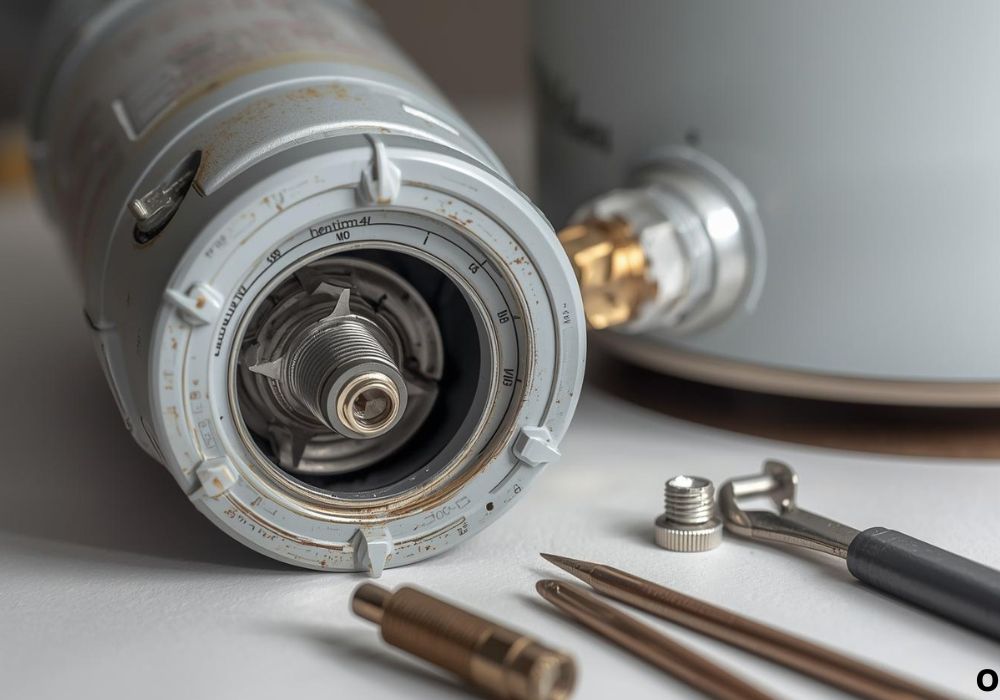
Regularly inspect the igniter tip and pilot assembly for corrosion or debris.
Clean mineral deposits and soot buildup to maintain spark efficiency.
Inspect wiring connections for damage or loose fittings periodically.
Avoid moisture accumulation near the igniter to prevent corrosion.
Use high-quality, compatible replacement parts when necessary.
Document inspections and maintenance for easy reference.
Perform periodic testing to confirm reliable ignition and hot water availability.
Cost Considerations
Multimeters or continuity testers range from $10–$30, providing long-term use for multiple tasks.
Replacement igniters cost between $20–$50, depending on the RV water heater model.
DIY testing avoids labor charges, which may exceed $100 for professional service.
Hidden costs may include corrosion or wiring damage if maintenance is neglected.
Professional inspection ensures safety and accurate testing but at higher expense.
High-quality tools and replacement parts reduce future repairs and improve reliability.
Budgeting for both DIY and professional options ensures preparedness for any scenario.
Frequently Asked Questions (FAQ)
How do I know if my RV water heater igniter is bad?
Pilot won’t ignite, clicking occurs without flame, or water stays cold.
Can I test it myself?
Yes, with proper tools, safety precautions, and step-by-step instructions.
What tools are required?
Multimeter, screwdriver, wrench, pliers, gloves, goggles, and optional flashlight.
Do I need a specific igniter?
Yes, ensure compatibility with your RV water heater model.
How often should I inspect the igniter?
Annually or when you notice pilot issues or inconsistent heating.
Can corrosion affect igniter performance?
Yes, mineral deposits or rust reduce spark efficiency and lifespan.
Is professional testing necessary?
Not for minor checks, but professionals are recommended for complex wiring or severe issues.
How do I interpret multimeter readings?
Continuity indicates a working igniter; an open circuit suggests failure.
Can I clean a corroded igniter?
Light cleaning is okay, but heavily damaged igniters should be replaced.
What safety gear is essential?
Gloves, goggles, insulated tools, and dry workspace with good ventilation.
Can moisture damage the igniter?
Yes, it can cause corrosion and reduce performance.
What if the pilot still won’t light after testing?
Check wiring, connections, and gas supply; replacement or professional help may be required.
Should I flush the water heater tank?
Yes, periodic flushing removes sediment that may affect element and igniter performance.
Can a faulty igniter damage the water heater?
Yes, repeated failed ignition can stress the heating element and gas valve.
How do I ensure long-term reliability?
Regular cleaning, inspection, proper installation, and high-quality replacement parts.
Conclusion
Testing your RV hot water heater igniter is a manageable DIY task with proper tools and safety precautions. Following step-by-step instructions ensures accuracy and reduces risks of electrical hazards or gas leaks.
Regular inspection and maintenance extend the lifespan of the igniter and maintain consistent hot water supply. High-quality replacement parts improve reliability and reduce future problems.
Whether DIY or professional assistance, timely testing ensures your water heater operates safely and efficiently. Proper care guarantees hot water availability and peace of mind during every RV trip.
With these methods, your RV hot water heater igniter remains functional, safe, and ready for every adventure. Consistent testing and preventive maintenance prevent costly failures and maintain comfort on the road.
I’m David R. Coleman, the founder, lead writer, and lifelong tool enthusiast behind GarageToolPro.com. With years of experience in automotive repair, woodworking, and home DIY projects, I created this platform to share practical tips, detailed tool reviews, and step-by-step guides that help mechanics, hobbyists, and homeowners get the job done right the first time.


